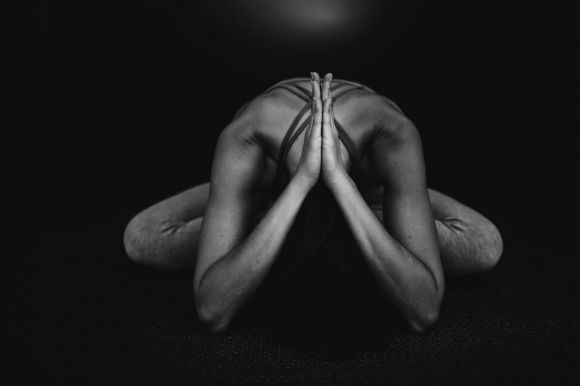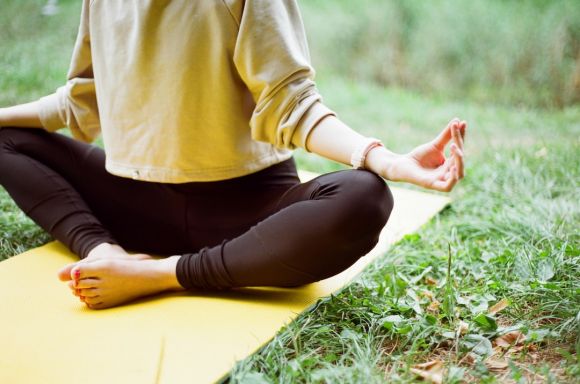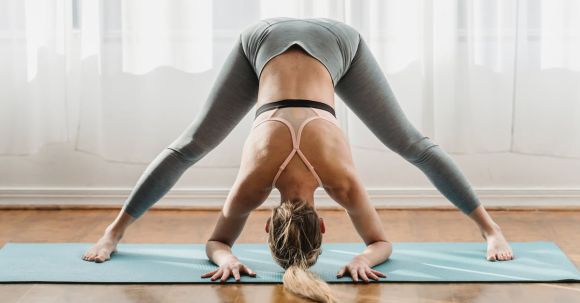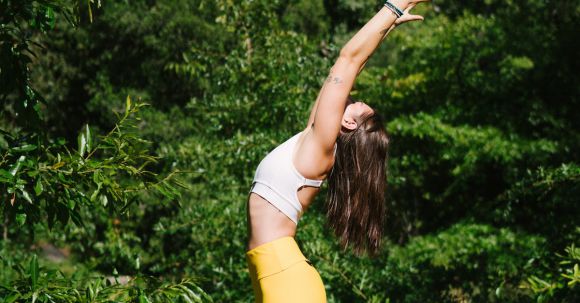Yoga is a practice that goes beyond the physical postures and stretches we commonly associate it with. It encompasses a rich spiritual tradition that has been passed down through generations. In recent years, there has been a growing interest in exploring the connection between yoga and spirituality. This article aims to delve into this relationship, uncovering the profound link between the two.
Yoga and meditation
In today's fast-paced world, finding balance and harmony between our mind and body has become increasingly important. Yoga and meditation have emerged as powerful tools to help us achieve this connection. By combining physical postures, breathwork, and mindfulness, these practices can have profound effects on our mental, emotional, and physical well-being. In this article, we will explore how yoga and meditation can strengthen the mind-body connection and provide practical tips for incorporating these practices into your daily routine.
The Power of Yoga
Yoga, an ancient practice originating from India, has gained immense popularity worldwide due to its numerous benefits. One of the key aspects of yoga is the focus on synchronizing the breath with movement. This mindful breathing creates a sense of awareness and presence in the present moment, allowing us to connect deeply with our physical body. Through regular practice, yoga can improve flexibility, strength, and balance. However, its benefits extend far beyond the physical realm. Yoga also cultivates mental clarity, emotional stability, and stress reduction. By consciously moving through each pose and observing the sensations in our body, we become more attuned to our physical and mental state. This increased self-awareness helps us identify and release tension, promoting a greater sense of relaxation and overall well-being.The Art of Meditation
Meditation, on the other hand, focuses on training the mind to achieve a state of calm and inner peace. By practicing mindfulness and concentration, we learn to observe our thoughts and emotions without judgment. This allows us to develop a deeper understanding of ourselves and the world around us. Regular meditation has been shown to reduce stress, anxiety, and depression. It enhances self-awareness, improves focus and concentration, and promotes emotional resilience. By dedicating a few minutes each day to stillness and silence, we can cultivate a sense of inner calm that extends into our daily lives.Integrating Yoga and Meditation into Your Routine
Now that we understand the benefits of yoga and meditation, let's explore some practical ways to incorporate these practices into our daily routine: 1. Start with a short meditation: Begin your day with a few minutes of meditation to set a positive tone for the rest of the day. Sit in a comfortable position, close your eyes, and focus on your breath. Notice the sensation of the breath entering and leaving your body, allowing any thoughts or distractions to come and go without attachment. 2. Practice mindful movement: Incorporate yoga into your daily routine by dedicating a specific time for practice. Choose a style and duration that suits your needs and abilities. As you move through each pose, pay attention to the sensations in your body, the rhythm of your breath, and the thoughts that arise. Allow yourself to fully immerse in the present moment. 3. Take mindful breaks: Throughout the day, take short breaks to reconnect with your body and mind. Stand up, stretch, and take a few deep breaths. Close your eyes for a moment and bring your attention inward. Notice any areas of tension or discomfort and consciously release them. 4. Cultivate gratitude: At the end of each day, take a few moments to reflect on the things you are grateful for. This simple practice can shift your focus from what went wrong to what went right, promoting a positive mindset and a sense of contentment. In conclusion, yoga and meditation offer powerful tools for strengthening the mind-body connection. By incorporating these practices into our daily routine, we can cultivate self-awareness, reduce stress, and improve our overall well-being. Start small and gradually increase the duration and intensity of your practice. Remember, it's not about achieving perfection but rather embracing the journey of self-discovery and growth.
Enhancing your yoga practice is not just about mastering challenging poses or increasing flexibility. It is also about cultivating a deeper connection between your mind, body, and breath. Breathwork, also known as pranayama, is a powerful tool that can take your yoga practice to the next level. By incorporating specific breathing techniques into your practice, you can enhance your focus, increase your energy levels, and promote relaxation. In this article, we will explore how to use breathwork to enhance your yoga practice.
The Importance of Breath in Yoga
Before delving into the different breathwork techniques, it is important to understand why breath is so crucial in yoga. In yoga philosophy, breath is considered the bridge between the mind and body. It is the life force that sustains us and connects us to the present moment. By becoming aware of our breath and consciously controlling it, we can influence our physical and mental state.Deep Belly Breathing
One of the most fundamental breathwork techniques in yoga is deep belly breathing, also known as diaphragmatic breathing. This technique involves breathing deeply into your belly, allowing it to expand on the inhale, and then contracting it on the exhale. Deep belly breathing helps to activate the parasympathetic nervous system, promoting a state of relaxation and calmness. It also helps to increase lung capacity and oxygenate the body.Ujjayi Breath
Ujjayi breath, also known as victorious breath, is a powerful breathing technique that can help to build heat and energy in your yoga practice. To practice Ujjayi breath, slightly constrict the back of your throat and breathe in and out through your nose. As you inhale, imagine that you are fogging up a mirror with your breath. This will create a soft hissing sound. On the exhale, continue to constrict the back of your throat, creating the same sound. Ujjayi breath helps to deepen your breath, regulate your body temperature, and focus your mind.Alternate Nostril Breathing
Alternate nostril breathing, also known as Nadi Shodhana, is a balancing breathwork technique that can help to calm the mind and restore equilibrium to the body. To practice alternate nostril breathing, sit comfortably and use your right thumb to close your right nostril. Inhale deeply through your left nostril. Then, use your right ring finger to close your left nostril and exhale through your right nostril. Inhale through your right nostril, close it with your thumb, and exhale through your left nostril. Repeat this pattern for several rounds, focusing on the flow of breath and the sensation of air passing through each nostril.Breath Retention
Breath retention, also known as breath holding, is a powerful technique that can help to build focus and concentration in your yoga practice. To practice breath retention, start by taking a deep inhale. Then, exhale fully and hold your breath for a few seconds before inhaling again. As you become more comfortable with breath retention, you can gradually increase the length of time you hold your breath. However, it is important to listen to your body and never push yourself to a point of discomfort.Incorporating Breathwork into Your Yoga Practice
Now that you are familiar with some of the key breathwork techniques, it is time to incorporate them into your yoga practice. Start by setting an intention to focus on your breath throughout your practice. As you move through different poses, pay attention to the quality of your breath and make any necessary adjustments. Experiment with different breathwork techniques and see how they enhance your overall experience on the mat. In conclusion, breathwork is an essential component of any yoga practice. By incorporating specific breathing techniques such as deep belly breathing, Ujjayi breath, alternate nostril breathing, and breath retention, you can enhance your focus, increase your energy levels, and promote relaxation. So take a deep breath, connect with your breath, and let it guide you on your yoga journey.
Yoga has become increasingly popular in recent years, and for good reason. Not only does it offer a multitude of mental and physical benefits, but it also provides a holistic approach to wellness. One of the key advantages of practicing yoga is its ability to improve flexibility and strength. Whether you are a beginner or an experienced yogi, incorporating yoga into your fitness routine can help you achieve a more balanced and flexible body.
Enhancing Flexibility through Yoga
Flexibility is the range of motion in your joints and muscles. Many people mistakenly believe that they need to be flexible in order to practice yoga. However, yoga is actually a powerful tool for increasing flexibility. With regular practice, you will notice a gradual improvement in your range of motion. Yoga poses, or asanas, are designed to stretch and lengthen the muscles, helping to improve flexibility over time. Poses like Downward-Facing Dog, Forward Fold, and Triangle Pose are particularly effective for targeting tight muscles and increasing flexibility in the hips, hamstrings, and spine. As you progress in your practice, you can challenge yourself with more advanced poses, such as King Pigeon or Standing Splits, which require greater flexibility.Building Strength through Yoga
In addition to flexibility, yoga also helps to build strength. Unlike traditional strength training exercises that primarily target specific muscle groups, yoga engages multiple muscle groups simultaneously. This results in a more balanced and functional strength throughout the body. Yoga poses that require holding your own body weight, such as Plank Pose and Crow Pose, help to build upper body strength. Standing poses like Warrior II and Chair Pose work the lower body, strengthening the legs and core. By incorporating both static and dynamic movements, yoga challenges the muscles in a unique way, promoting overall strength development.The Mind-Body Connection
One of the distinguishing features of yoga is its emphasis on the mind-body connection. As you move through the various poses, you are encouraged to focus on your breath and be present in the moment. This mindfulness not only enhances the physical benefits of yoga but also helps to cultivate a sense of inner strength and resilience. When you approach yoga with a calm and focused mind, you can better tune into your body's needs and limitations. This awareness allows you to practice safely and avoid overexertion or injury. By listening to your body, you can make modifications or take rest when necessary, ensuring a sustainable and long-term yoga practice.Incorporating Yoga into Your Routine
To reap the full benefits of yoga, it is important to make it a regular part of your fitness routine. Aim for at least two to three yoga sessions per week, ideally with a mix of both gentle and more challenging classes. If you are new to yoga, consider taking a beginner's course or working with a qualified instructor who can guide you through proper alignment and modifications. In conclusion, yoga is a powerful practice that can improve both flexibility and strength. By incorporating yoga into your fitness routine, you can experience the physical benefits of increased flexibility and balanced strength. Moreover, the mindfulness cultivated through yoga can enhance your overall well-being. So roll out your mat, take a deep breath, and embark on a journey to a more flexible and stronger you through the practice of yoga.
In today's fast-paced world, it's no surprise that anxiety and stress levels are on the rise. We often find ourselves overwhelmed with work, personal responsibilities, and the constant demands of technology. However, by incorporating guided relaxation techniques into our daily routines, we can take control of our mental well-being and reduce anxiety and stress.
Understanding Anxiety and Stress
Before we dive into the various guided relaxation techniques, let's first understand what anxiety and stress are. Anxiety is a feeling of unease, such as worry or fear, that can be mild or severe. On the other hand, stress is the body's response to a demand or threat, which can be both physical and emotional. While some level of anxiety and stress is normal, chronic or excessive levels can have detrimental effects on our health.The Power of Guided Relaxation
Guided relaxation is a technique that involves using auditory or visual cues to induce a state of relaxation. By focusing our attention on these cues, we can redirect our thoughts from anxious or stressful stimuli to more calming and soothing ones. This helps activate the body's relaxation response, reducing the levels of stress hormones and promoting a sense of calmness.Deep Breathing: A Simple Technique with Powerful Effects
One of the most accessible and effective guided relaxation techniques is deep breathing. By taking slow, deep breaths and focusing on the sensation of inhaling and exhaling, we can activate the body's relaxation response and reduce anxiety and stress. To practice deep breathing, find a quiet place, sit or lie down comfortably, and close your eyes. Inhale deeply through your nose for a count of four, hold for a count of four, and exhale slowly through your mouth for a count of four. Repeat this cycle for several minutes, allowing your body to relax with each breath.Progressive Muscle Relaxation: Unwinding the Tension
Another helpful guided relaxation technique is progressive muscle relaxation. This technique involves systematically tensing and then relaxing different muscle groups in the body. By doing so, we can release physical tension and promote a sense of relaxation. To practice progressive muscle relaxation, start by tensing the muscles in your toes and then slowly work your way up to your head, tensing and relaxing each muscle group as you go. Pay attention to the sensations of tension and relaxation, allowing yourself to let go of any physical stress.Visualization: Creating a Calm Mental Oasis
Visualization is a guided relaxation technique that involves creating mental images of calming and peaceful scenes. By immersing ourselves in these visualizations, we can transport our minds to a tranquil space and reduce anxiety and stress. To practice visualization, find a quiet and comfortable space, close your eyes, and imagine yourself in your ideal peaceful setting. It could be a beach, a forest, or any place that brings you a sense of calmness. Engage all your senses in the visualization, focusing on the sights, sounds, smells, and textures of your imagined environment.Incorporating Guided Relaxation into Daily Life
To truly benefit from guided relaxation techniques, it's important to incorporate them into our daily lives. Carve out a few minutes each day to practice deep breathing, progressive muscle relaxation, or visualization. You can also explore guided meditation apps or videos that provide step-by-step instructions for relaxation exercises. Additionally, try to create a peaceful environment by eliminating distractions and finding a quiet space where you can focus on your relaxation practice.In Conclusion: Taking Control of Your Mental Well-being
By incorporating guided relaxation techniques into our daily routines, we can take control of our mental well-being and reduce anxiety and stress. Whether it's through deep breathing, progressive muscle relaxation, or visualization, these techniques offer a simple yet powerful way to promote relaxation and calmness in our lives. Remember to make time for yourself and prioritize your mental health – you deserve it.Creating Your Own Meditation Space at Home
In today's fast-paced world, finding moments of peace and tranquility is more important than ever. One way to achieve this is by creating your own meditation space at home. Having a dedicated area where you can relax, unwind, and connect with your inner self can greatly enhance your meditation practice. Here are some steps to help you create a serene and inviting meditation space in the comfort of your own home.Choose the Right Location
The first step in creating your own meditation space is to choose the right location. Look for a quiet and secluded area in your home where you can escape from distractions. It could be a spare bedroom, a corner of your living room, or even a small nook in your backyard. The key is to find a space that feels calm and inviting to you.Declutter and Cleanse the Space
Once you have chosen the location, the next step is to declutter and cleanse the space. Remove any unnecessary items or clutter that may distract you during your meditation practice. Clean the area thoroughly to create a fresh and inviting atmosphere. This will help you create a clean canvas for your meditation space.Set the Mood with Lighting
Lighting plays a crucial role in creating the right ambiance for your meditation space. Natural light is ideal, as it creates a sense of openness and tranquility. If natural light is not available, opt for soft, warm lighting that is easy on the eyes. Consider using candles, fairy lights, or Himalayan salt lamps to add a soothing glow to your meditation space.Choose Comfortable Seating
Comfort is key when it comes to meditation. Choose a seating option that allows you to sit comfortably for an extended period of time. This could be a meditation cushion, a yoga mat, or a comfortable chair. Experiment with different seating options to find what works best for you and your body.Add Personal Touches
Personalize your meditation space by adding meaningful and calming elements. This could be a small altar with items that hold spiritual significance to you, such as crystals, statues, or photographs. Incorporate elements from nature, such as plants or seashells, to bring a sense of grounding and serenity to your space. Consider hanging inspirational quotes or artwork that resonates with you.Create a Sound Sanctuary
Sound can greatly enhance your meditation experience. Consider incorporating soothing sounds into your meditation space. This could be through the use of a meditation app, a small fountain, or a singing bowl. Experiment with different sounds and find what helps you relax and focus during your meditation practice.Establish a Routine
To make the most of your meditation space, establish a regular meditation routine. Set aside dedicated time each day to sit in your meditation space and practice mindfulness. Consistency is key when it comes to reaping the benefits of meditation. By establishing a routine, you will create a sense of ritual and make your meditation space an integral part of your daily life. In conclusion, creating your own meditation space at home can provide you with a sanctuary of peace and tranquility in the midst of a busy world. By carefully choosing the location, decluttering and cleansing the space, setting the right mood with lighting, and personalizing it with meaningful elements, you can create a space that supports your meditation practice. Remember to prioritize comfort, incorporate soothing sounds, and establish a regular routine to fully immerse yourself in the benefits of meditation. So go ahead, carve out a little corner of your home and create your own oasis of calmness and serenity.
Back pain is a common ailment that affects millions of people worldwide. Whether it is caused by poor posture, muscle strain, or a medical condition, back pain can be debilitating and impact daily life. However, there is a natural and effective way to relieve back pain and improve spinal health – through the practice of yoga. By incorporating specific yoga poses into your daily routine, you can strengthen your back muscles, increase flexibility, and promote overall wellness.
Stretch and Strengthen with Cat-Cow Pose
One of the most beneficial yoga poses for relieving back pain is Cat-Cow pose. This pose is a gentle and effective way to stretch and strengthen the spine. Begin by getting on all fours, with your hands directly under your shoulders and your knees under your hips. As you inhale, arch your back and lift your chest and tailbone towards the ceiling, creating a gentle backbend. This is the Cow pose. On the exhale, round your back and tuck your chin towards your chest, creating a hunched position. This is the Cat pose. Repeat this movement for several breaths, focusing on the fluidity of the motion and the stretch in your spine.Lengthen and Unwind with Downward Facing Dog
Another yoga pose that can help relieve back pain is Downward Facing Dog. This pose not only stretches the spine but also strengthens the back muscles. Start by coming onto your hands and knees. Then, lift your hips up towards the ceiling, straightening your legs and forming an inverted V shape with your body. Press your hands firmly into the ground and imagine lengthening your spine. Feel the stretch in your hamstrings and the release of tension in your back as you hold this pose for several breaths. Downward Facing Dog is a rejuvenating pose that can provide relief from back pain and improve overall spinal health.Release Tension and Relax with Child's Pose
Child's Pose is a calming and restorative yoga pose that can help release tension in the back and neck. To practice Child's Pose, start by kneeling on the floor and bring your big toes together. Sit back on your heels and then slowly lower your forehead to the ground, extending your arms in front of you. Allow your entire body to relax and surrender to the pose, focusing on deep breaths and letting go of any tension in your back. Child's Pose is a wonderful pose to end your yoga practice, as it promotes relaxation and a sense of peace.Incorporate Yoga into Your Daily Routine
To truly experience the benefits of yoga for back pain relief and spinal health, it is important to incorporate it into your daily routine. Set aside a dedicated time each day to practice these yoga poses, even if it is just for a few minutes. Consistency is key when it comes to reaping the benefits of yoga. Additionally, listen to your body and modify the poses as needed. If a particular pose causes discomfort or pain, adjust it to suit your individual needs. Remember, yoga is a personal practice, and it should be tailored to your body and abilities.Conclusion: Embrace the Healing Power of Yoga
In conclusion, yoga has the power to relieve back pain and improve spinal health. By incorporating poses such as Cat-Cow, Downward Facing Dog, and Child's Pose into your daily routine, you can stretch and strengthen your back muscles, increase flexibility, and promote overall wellness. Embrace the healing power of yoga and experience the transformative benefits it can have on your back health. Start your yoga practice today and say goodbye to back pain.
In today's fast-paced world, stress and tension seem to be an inevitable part of our lives. From the demands of work to personal responsibilities, it can be challenging to find moments of peace and relaxation. However, one effective way to release tension and find inner calm is through yoga stretches. By incorporating these stretches into your daily routine, you can not only improve your physical well-being but also achieve a sense of peace and tranquility.
Relax the Mind, Relax the Body
Yoga stretches are not just about physical flexibility; they also offer a mental release. As you move through each pose, focusing on your breath and being present in the moment, you allow your mind to let go of worries and stress. This mental relaxation has a profound effect on your physical body, helping to release tension and tightness.Child's Pose: Embrace Comfort and Surrender
One of the most soothing yoga stretches is the Child's Pose. This pose allows you to curl up into a fetal position, symbolizing a return to a place of comfort and safety. As you sink into this pose, focus on your breath and let go of any tension in your body. Feel the gentle stretch in your lower back and shoulders, and allow yourself to surrender to the pose. Stay in this position for a few deep breaths, feeling the tension melt away.Downward-Facing Dog: Energize and Lengthen
The Downward-Facing Dog is a foundational yoga pose that stretches and strengthens the entire body. This pose helps to release tension in the shoulders and hamstrings while lengthening the spine. As you raise your hips towards the ceiling and press your heels towards the ground, feel the energizing stretch in your entire body. Take deep breaths in this pose, allowing the tension to release with each exhale.Warrior II: Find Strength in Stillness
The Warrior II pose is a powerful posture that not only strengthens the legs and core but also cultivates a sense of inner strength and stability. As you step your feet wide apart and turn your front foot forward, feel the strength and grounding in your legs. Extend your arms out to the sides, reaching through your fingertips, and find stillness in this pose. Embrace the sense of power and peace that comes with holding the Warrior II pose.Corpse Pose: Surrender and Let Go
The final pose in any yoga practice is Corpse Pose, also known as Savasana. This pose is a time for complete surrender and relaxation. Lie on your back with your arms and legs extended, palms facing up. Close your eyes and allow your body to sink into the ground. Focus on your breath and let go of any lingering tension or thoughts. Stay in this pose for a few minutes, enjoying the peace and stillness that it brings.Incorporating Yoga Stretches into your Routine
To experience the full benefits of yoga stretches, it is essential to incorporate them into your daily routine. Set aside a specific time each day, whether it is in the morning or evening, to dedicate to your yoga practice. Start with just a few poses and gradually increase the duration and complexity of your practice. Remember to listen to your body and not push yourself beyond your limits. With consistency and patience, you will begin to notice the release of tension and the emergence of inner peace. In conclusion, yoga stretches offer a powerful tool for releasing tension and finding peace in our hectic lives. Through these poses, we can relax the mind, relax the body, and cultivate a sense of inner calm. By incorporating these stretches into our daily routine and dedicating time to our yoga practice, we can experience the transformative benefits that yoga has to offer. So, roll out your mat, take a deep breath, and begin your journey towards release and peace through yoga stretches.
Yoga has long been recognized for its countless benefits to both the body and mind. From increased flexibility and strength to reduced stress and anxiety, the practice of yoga provides a holistic approach to overall health and well-being. One area where yoga truly shines is in its ability to improve cardiovascular health. By incorporating dynamic yoga sequences into your regular practice, you can effectively boost your heart health and enhance your overall fitness level.
Understanding Cardiovascular Health
Before delving into the specific benefits of dynamic yoga sequences, it's important to understand what cardiovascular health entails. The cardiovascular system is responsible for circulating blood throughout the body, delivering oxygen and nutrients to the organs and tissues. A healthy cardiovascular system ensures that the body functions optimally, reducing the risk of heart disease, stroke, and other cardiovascular conditions. Regular exercise, such as dynamic yoga, plays a crucial role in maintaining and improving cardiovascular health.Dynamic Yoga Sequences: A Cardiovascular Workout
Unlike traditional static yoga poses, dynamic yoga sequences involve continuous movement, flowing from one pose to another in a fluid manner. These sequences are designed to increase heart rate, improve blood circulation, and challenge the cardiovascular system. By incorporating vigorous movements and transitions, dynamic yoga sequences provide a cardiovascular workout that can be as effective as other forms of aerobic exercise.Engaging the Heart and Lungs
Dynamic yoga sequences engage both the heart and lungs, strengthening these vital organs and improving their efficiency. As the body moves through various poses and transitions, the heart rate increases, forcing the heart to work harder. This increased workload strengthens the heart muscle, improving its ability to pump blood efficiently. Additionally, the deep and controlled breathing techniques used in yoga help to expand lung capacity, enhancing oxygen uptake and improving overall cardiovascular function.Boosting Endurance and Stamina
Regular practice of dynamic yoga sequences can significantly improve endurance and stamina. By challenging the cardiovascular system, these sequences increase the body's ability to sustain physical activity for longer periods of time. This improved endurance not only benefits cardiovascular health but also enhances overall fitness levels, allowing individuals to engage in other forms of physical activity with greater ease and efficiency.Reducing Blood Pressure and Cholesterol Levels
High blood pressure and elevated cholesterol levels are major risk factors for cardiovascular disease. Dynamic yoga sequences have been shown to effectively reduce both blood pressure and cholesterol levels, thereby reducing the risk of developing heart disease. The combination of aerobic exercise, stress reduction, and improved blood circulation provided by yoga helps to lower blood pressure and promote healthy cholesterol levels, further enhancing cardiovascular health.Enhancing Stress Management
Stress is a significant contributor to cardiovascular disease. The practice of dynamic yoga sequences promotes stress reduction and relaxation, benefiting cardiovascular health in multiple ways. By engaging in a rhythmic and flowing practice, individuals can release tension, reduce anxiety, and lower stress levels. This, in turn, helps to regulate blood pressure, improve heart rate variability, and promote overall cardiovascular well-being.Incorporating Dynamic Yoga Sequences into Your Practice
To reap the cardiovascular benefits of dynamic yoga sequences, it's important to incorporate them into your regular yoga practice. Start by selecting a sequence that suits your fitness level and gradually increase the intensity as you progress. Remember to listen to your body and modify poses as needed. Consistency is key, so aim to practice dynamic yoga sequences at least two to three times per week to experience the full benefits. Conclusion: Dynamic yoga sequences provide a powerful and effective means of improving cardiovascular health. By engaging the heart and lungs, boosting endurance and stamina, reducing blood pressure and cholesterol levels, and enhancing stress management, these sequences offer a comprehensive approach to cardiovascular fitness. Incorporate dynamic yoga into your regular practice and take a proactive step towards a healthier heart and a healthier you.
In our fast-paced and hectic world, finding moments of peace and serenity can be a challenge. The constant demands of work and personal life can leave us feeling overwhelmed and stressed. However, there is a powerful tool that can help us find inner calm and tranquility – guided meditation.









